Cun paschiun pella regiun – with passion for the region
Peder Rauch
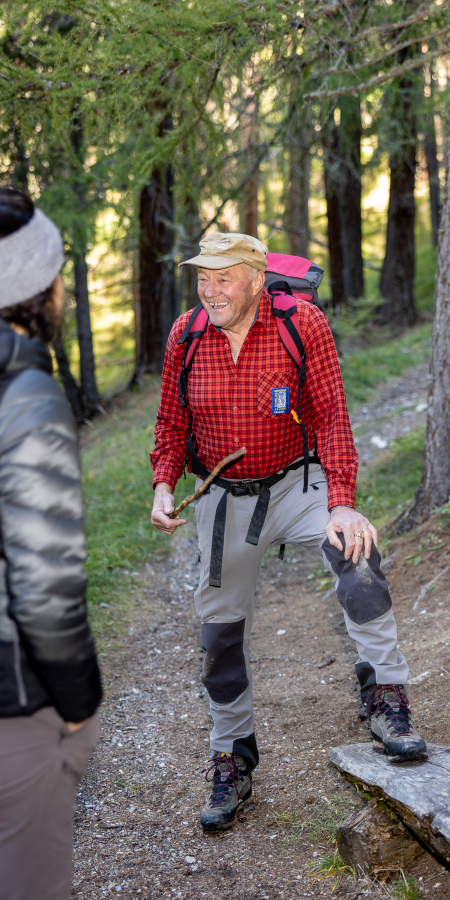
Underground
Inch by inch, Peder pushes his way through a narrow side tunnel of the former mine in remote S-charl. The air is thin and the fine dust flickers in the glow of the headlamp, the only source of light deep underground. In some places, the kilometer-long tunnel system is so narrow that progress seems almost impossible. It is important not to lose one's bearings in the mighty rock masses of the Mot Madlain. Together with a group of guests, Peder follows in the footsteps of the former miners who searched for lead and silver ores hundreds of years ago. What was then an unimaginably hard and life-threatening task, Peder conveys to his guests in a safe manner and with a reassuring smile on his now slightly dusty face.
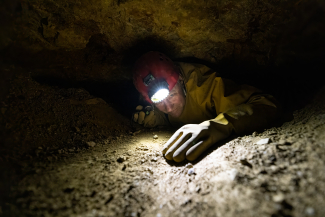

On the trail of silver
The history of mining in S-charl dates back to the 12th century. The miners, most of whom came from the Tyrol, used their sometimes short lives to search mainly for silver. From three tons of ore, the original mineral mixture, about 3 kg of lead and only 30 grams of silver could be extracted by laborious manual work, with the use of mallets and iron and later the use of explosives.
The mined ore was laboriously transported by handcarts over 350 meters of altitude down to S-charl, where it was processed in the smelting plants. The finished silver and lead ingots were finally transported over the Pass da Costainas and the S-charler Joch to Val Müstair and on to Meran in South Tyrol and later Hall in Tyrol, where jewelry and coins were produced. In the 19th century, mining experienced its heyday before it gradually became quieter in the tunnels and the infrastructure has been left to creeping decay.
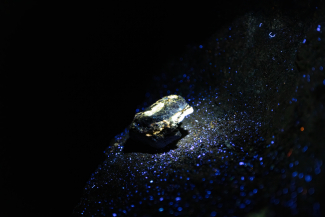
Mining and bears
Today, the mining history of S-charl can be experienced in a somewhat more relaxed way in the «Schmelzra» museum. Before this became possible, however, the ruins of the time had to be fundamentally renovated. In order to obtain subsidies, it was necessary to establish the present-day foundation «Fundaziun Schmelzra S-charl». This was accomplished in 1987. After an initially unsuccessful search for a responsible person for the foundation, Peder Rauch made himself available. Together with numerous voluntary helpers and trainees, during ten years of intensive work, a small but impressive and detailed museum was created from the former ruin, which was opened in 1997. Visitors get an authentic impression of the past silver mining in S-charl in the architecturally attractively designed rooms.
And of the bear. The experience-oriented bear exhibition in the same building, designed by the Swiss National Park, shows in an exciting way the way of life of the brown bears. Incidentally, the last bear was shot in 1904 near Piz Pisoc, the highest mountain in the National Park at 3,173 m. The bear is now a part of the National Park. Peders great-grandfather also killed a bear in Val Tavrü in 1895.
Today the predators are strictly protected and from time to time they even find their way back to the Engadin. Traces of the distinctive bear paws are also sometimes found in S-charl. Sightings, on the other hand, are practically non-existent, as the bear basically keeps away from humans.

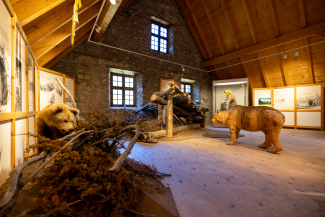
The remote village
S-charl lies in a wonderfully quiet side valley near Scuol in the Lower Engadine. It was not until the 1960s that a road was built for cars and post bus traffic, which even today can only be used from spring to the beginning of winter. In winter, the small hamlet can only be reached on foot or by a romantic horse-drawn sleigh ride.
Peder loves this peace and seclusion and is lucky enough to live there with his wife during the summer months. He inherited a house from his parents directly on the hiking trail to Alp Sesvenna and lovingly rebuilt it with his sons. Together with his wife, he now runs the small hotel garni and offers guests a stay in absolute peace and close to nature. From there they also undertake their own hikes to the surrounding mountains, such as Mot Madlain and the adjacent side valleys.
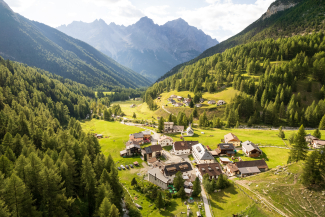
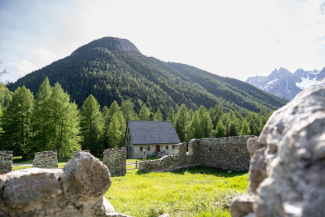
Cun paschiun pella regiun – with passion for the region
On a warm summer afternoon, Peder likes to sit on a bench in front of the house, enjoy the soothing rays of the sun and look back with shining eyes and perhaps a little melancholy on his time as secretary of the then regional association «Pro Engiadina Bassa» (today «Regiun Engiadina Bassa/Val Müstair»).
In 1974 the investment law was approved by the Swiss people, a measure for the promotion of mountain areas in Switzerland. The Lower Engadine was one of the 54 regions that were eligible for this support.
A secretary was then sought for Peder's homeland. Peder was given the job and during his term of office he was instrumental in numerous development projects, including the introduction of a central waste disposal site, the establishment of a music school and a curative education service.
On his second day as secretary, the project for the construction of the Vereina Tunnel, the railroad connection between the Engadine and the Prättigau, was presented. Peder Rauch was involved in the planning phase from the very beginning. At the beginning, the planned construction met with great skepticism from parts of the population. Peder did not let himself be put off by this and was a persistent promoter of the connection to the Engadine and from the Engadine to the outside world. Some 20 years later, the tunnel was ceremoniously opened in 1999 and has since brought the region numerous vacation guests on the Rhaetian Railway.
You have to fight for something. You have to fight for something sustainably, otherwise you won't get it done.
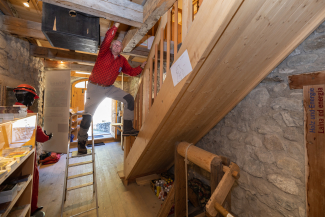
Romanesque songs
As a passionate musician, Peder also «fights» for the preservation of the Romansh language. Together with his colleague Flurin Janett they founded «Ils Trubadurs Peder e Flurin», recorded numerous sound carriers and made music together for over 30 years. Even today Peder, now together with Benedict Stecher, can be found at various musical events in the valley and it is impossible to imagine life without him. With a lot of charm and also wit they inspire the listeners and thus contribute to the preservation of the Rhaeto-Romanic language. The sparkle in Peders eyes remains unchanged and continues to express his passion for the region.
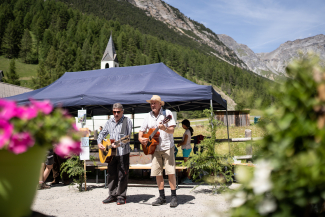
Text & images: Dominik Täuber.


